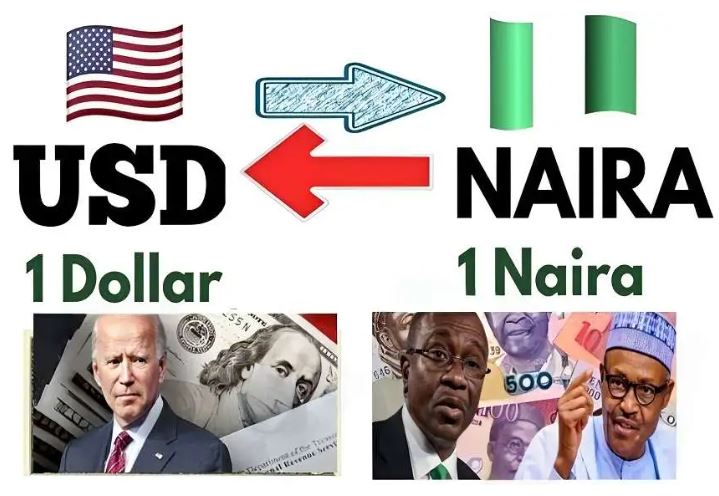Black Market Dollar to Naira Today 23rd April 2023: Dollar to Naira exchange rate in Nigeria’s black market is between ₦745 and ₦750, according to information gotten from Aboki exchange rate.
Aboki dollar rate in nigeria today: How much is Aboki exchange rate in Nigeria today?
How much is the Dollar to Naira Exchange rate at the black market and aboki fx today? See today’s USD to Naira exchange rate. You convert your USD to Naira at these rates, or you convert your dollar to Naira at the most recent black market or parallel market rate.
Dollar to naira black market exchange rate today black market (Aboki dollar rate):
GoldenNewsNg understands that the exchange rate for a dollar to naira at Lagos Parallel Market (Black Market) players buy a dollar for N745 and sell at N750 as of the time of filing this report.
Aboki dollar to naira today black market?
| Dollar to Naira (USD to NGN) | Black Market Exchange Rate Today |
| Buying Rate | 745 |
| Selling Rate | 750 |
black market exchange rate today
IMPORTANT NOTE: Please note that the exchange rate changes hourly.… it depends on the volume of dollars available and the Demands. What it means is that…you can buy or sell 1 dollar at ₦745 and the price can change (high or low) within hours.
The present buying and selling rates of United States Dollars (USD) on the unofficial parallel market are provided below for Bureau De Change (BDC) operators in Lagos and Abuja, also known as the black market.”
Factors Influencing Foreign Exchange Rates: Understanding the Causes of Fluctuations
Foreign exchange rates are constantly fluctuating, and it’s important to understand what influences these changes. Here are some of the key factors that can impact exchange rates:
Inflation Rates: Inflation can have a direct impact on exchange rates. When inflation is high, the value of the currency tends to decline, leading to a decrease in its exchange rate. On the other hand, when inflation is low, the currency’s value may increase, leading to a rise in its exchange rate.
Interest Rates: Interest rates can also have a significant impact on exchange rates. When a country’s interest rates rise, it can attract foreign investors who seek higher returns on their investments. This can lead to an increase in demand for the country’s currency, resulting in a rise in its exchange rate.
Government Debt: The level of national debt can also influence exchange rates. When a country has high levels of debt, it can cause investors to lose confidence in the economy and lead to a decrease in the value of the currency, resulting in a decline in its exchange rate.
Speculation: Speculators can also impact exchange rates. They may buy or sell a particular currency based on their expectations of future changes in the currency’s value, which can result in fluctuations in its exchange rate.
Conditions of Trade: The terms of trade, such as import and export levels, can also impact exchange rates. When a country has a trade surplus, meaning it exports more than it imports, it can increase the demand for its currency, leading to an increase in its exchange rate. Conversely, when a country has a trade deficit, meaning it imports more than it exports, it can decrease the demand for its currency, resulting in a decline in its exchange rate.
Fascinating Facts About the United States Dollar You Didn’t Know
The US dollar is one of the most commonly used currencies in the world, but there are some interesting facts about it that you may not know:
- The US dollar is made up of three different denominations: the penny, nickel, and dime, with 100 cents making up one dollar.
- The dollar was introduced in 1792, replacing the Spanish dollar, which was previously used in the colonies.
- The US dollar is the most traded currency in the world, and also the most counterfeited.
- Over 60% of all international transactions are done in US dollars.
A Brief History of the US Dollar
The US dollar has a rich history dating back to its creation in 1792, when it was designated as the country’s official currency through the Coinage Act. Over time, the dollar has undergone several changes, such as replacing Spanish coins in 1854 and the US going off the gold standard in 1933.
Today, the US dollar remains one of the most commonly used currencies globally, with over 60% of all international transactions conducted in USD.
Who Manages the Production of US Currency?
The United States Mint, a governmental agency that falls under the Department of the Treasury, is responsible for producing paper currency and coins for the US dollar. The president decides on the design for each bill and coin, and the Mint creates a prototype for approval before going into production. This is why you may see a portrait of the president on US currency.




















